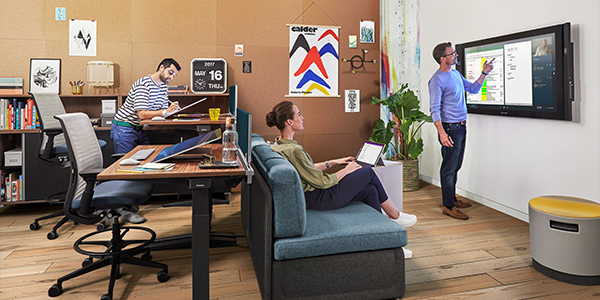“Ideas are the currency of the new economy.”
That quote came from Richard Florida, an economist and social scientist who authored “The Rise of the Creative Class,” over a decade ago. Florida proposed that creative work is not exclusively an artistic pursuit but rather the process of generating new ideas and solving complex problems. He also maintained that creativity was critical for people, business, and cities to develop if they wanted to thrive long-term.
Fast forward to today and creativity going through a renaissance, especially in the workplace. As more millennials graduate college, their message upon joining the workforce is clear – they aren’t content to do routine work just to make a paycheck – causing employers to rethink their strategies for attracting new talent.
At the same time, technologies have grown so exponentially, ushering in the Fourth Industrial Revolution, that businesses realize they can’t cost cut their way to growth, and instead refocus on innovation. It’s this drive for innovation, in increasingly complex and face-paced conditions, that is causing a fundamental shift toward more creative work.

The Intersection of Digital and Physical
In many organizations, however, workplace creativity isn’t happening spontaneously, nor is it isolated “Eureka!” moments. With the right conditions, creative work is a process in which everyone can engage.
As we discussed back in March, Steelcase and Microsoft partnered to find ways to meet the challenges organizations and people face as they try to engage in more creative work. Starting with understanding how creativity happens was fundamental to realizing that both space and technology play a role in supporting this work.
Creativity is essentially about problem solving, meaning it’s challenging, nebulous, and iterative. It’s also incredibly demanding – physically, cognitively and emotionally. So, the solution lies in having the right range of spaces and technology to support all the diverse stages of creative work.
“It’s really all about the intersection of the digital and the physical – having the right place and the right technology at the right time,” says James Ludwig, head of global design and product engineering at Steelcase. “That’s why we’re starting to see movement away from the traditional corporate office toward workplaces that are more like creative studios – a plurality of spaces, each designed to support people and the technologies that can make their work easier.”
“Traditionally, technology has not always been leveraged during the early stages of the creative process,” says Ralf Groene, general manager of Microsoft Devices. “This can put people and teams at a disadvantage. Something arises in our heads. It’s usually incomplete and we jot it down, find a whiteboard and pull in colleagues. Computers usually came in at later stages. But now technology can be a tool to amplify our thinking throughout the entire process. We can take our content with us wherever we want to work. It will always be there, with the right security and the speed of light,” he explains.
Steelcase and Microsoft’s collaboration is really exploring how the workplace can more successfully drive creative performance. By first understanding the key behaviors and modes of creative work, we can then accelerate creativity by more easily identifying how place and technology can help the process.



